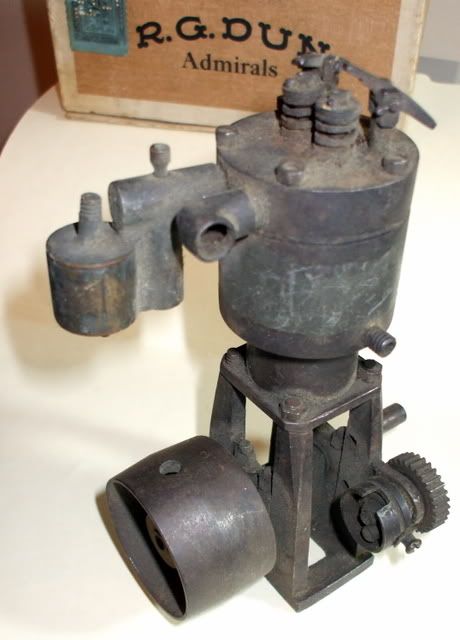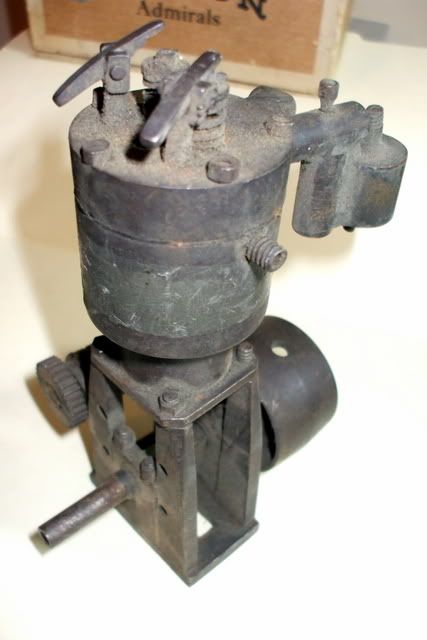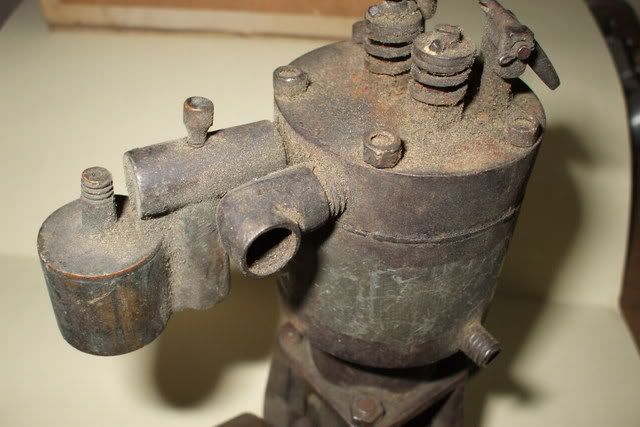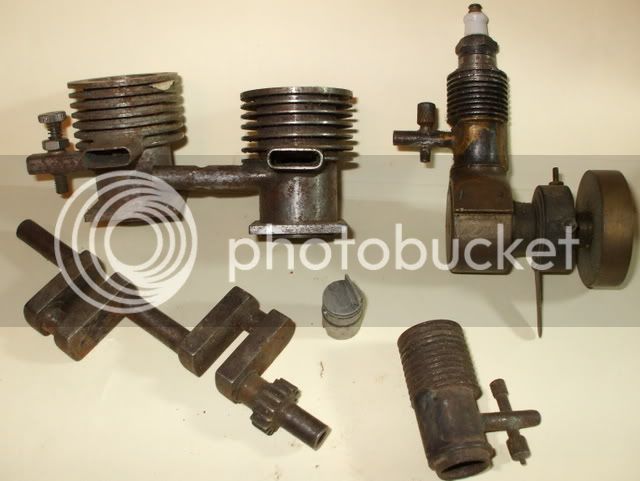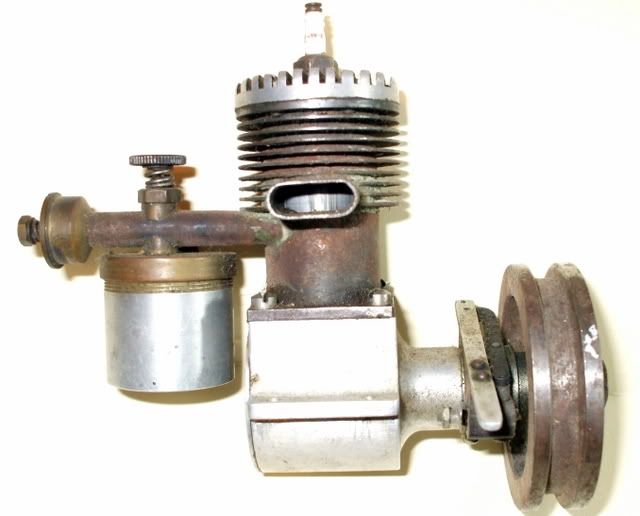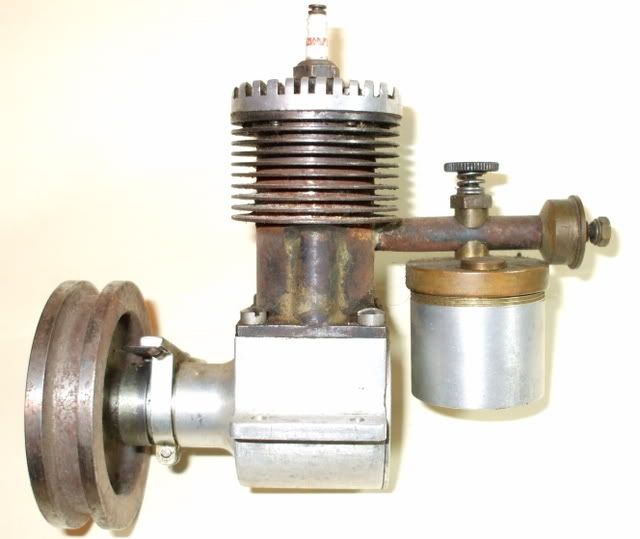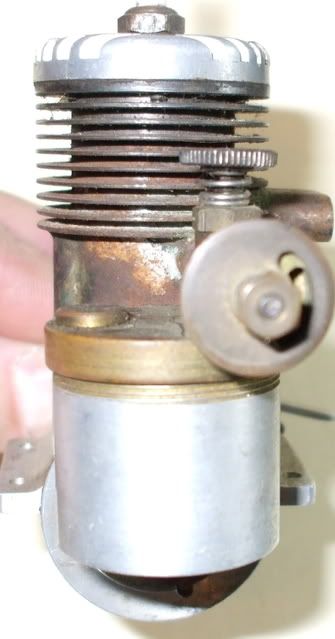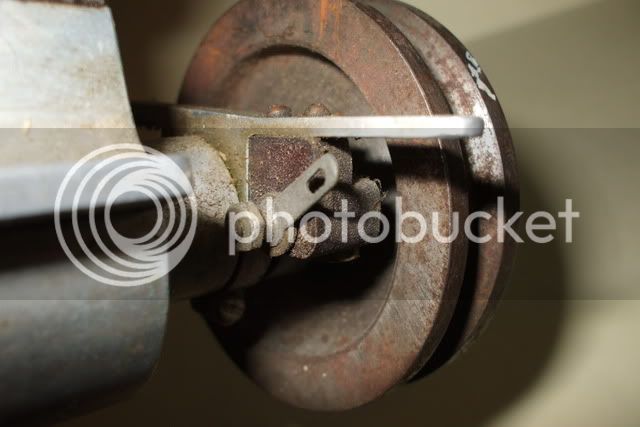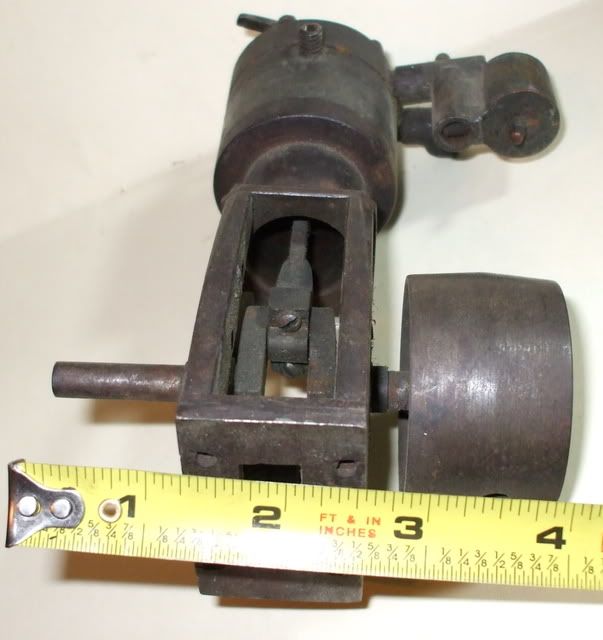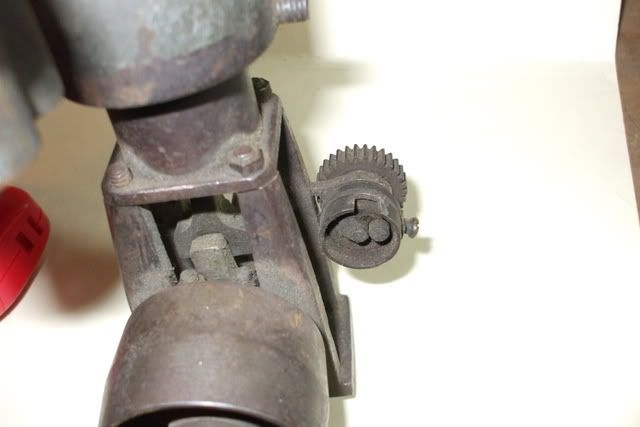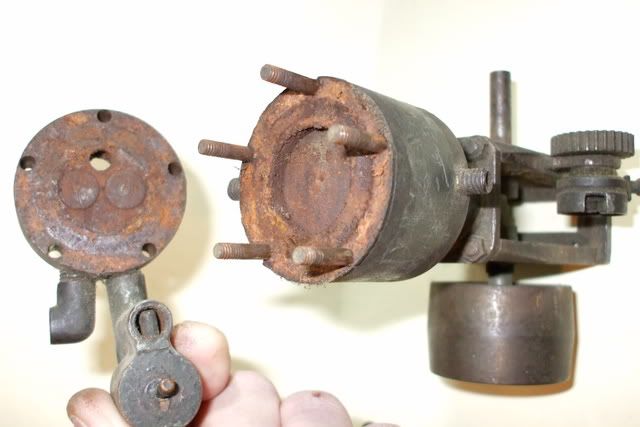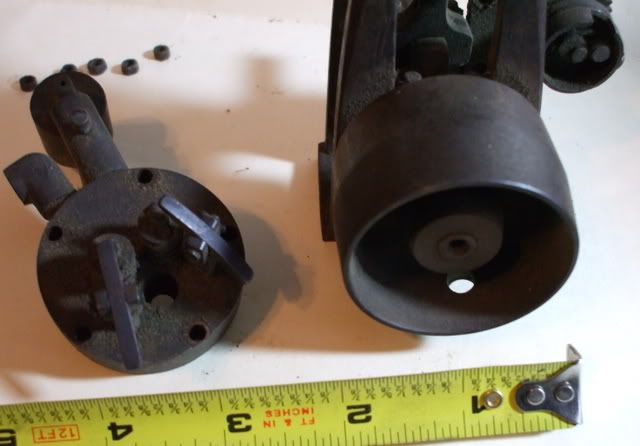Mike,
The engine in your second post was probably made for model boat or model car racing. The flywheel has a groove in it for whip starting with a cord. Also the cylinder head has the cooling fins running perpendicular to the normal direction for model aircraft engines. Depending on if the piston had a deflection baffle on it, or what kind of baffle, it might have been possible to rotate the head if it was a 4 bolt head, but it was common that the head had a recess in it for the baffle so the head could not be repositioned.
If you are serious about researching this type of engine, the
American Model Engine Encyclopedia would be a good place to start assuming that it is an American made engine. The publisher, Tim Dannels is a nice guy and if you send him a photo he might be able to identify the engine. Keep in mind that his time is limited and don't expect him to research it for you, but he might be able to identify it with out researching.
He also publishes the Engine Collectors Journal.
This link is to the Encyclopedia, but poke around a bit and you will find info on the Journal and on how to contact Tim. Also a link to MECA, the Model Engine Collectors Assn.
http://www.modelenginecollecting.com/engine-encyclopedia.html
Steve mentioned Modelenginenews.org. On that site, go to the gallery and start looking. It is one of the largest online collection of model engine photos available.
On the large engine, there is not much to go on. There were many different utility engines produced that looked similar to that one. With so much missing it would be difficult to even try to identify it.
Keep in mind on all engines of this vintage, many of them were home constructed, often from plans published in magazines and many general purpose castings were available for a person to incorporate in their own design. This applies to all of the engines you have pictured. It is quite possible that these are one of a kind engines and maybe even built by your grandfather as from what you write he had both the interest and equipment to do so.
Gail in NM,USA
